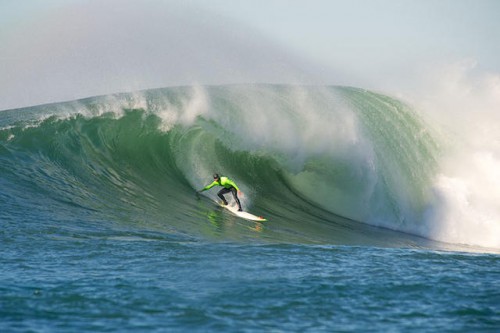 Today’s designers have to be more than surface decorators,
Today’s designers have to be more than surface decorators,
writes Mark Rolston. They need to become systems designers.
As a product designer and a part of frog for nearly 20 years, I have seen our industry change quite a bit. But what I’ve experienced is nothing compared with the changing landscape I see coming. Our industry will have a choice to make: adapt, or be relegated to decorating the surfaces of the world.
Our challenge begins with our history. Product designers have historically been focused on creating the things we can see, feel, and operate. It’s still that way today. Even the newer field of software UI design is largely derivative of the approach and values created by industrial designers many years ago. While these two disciplines together make up the heart of product design today, it has been the field of computing that has driven so much change recently.
Twenty years ago, computing was just coming into its own as a medium to which designers could usefully contribute. Since then, it has become the source of just about every major opportunity for product innovation. Audio devices are essentially small computers. Mobile phones are small computers. Everything from medical devices to sports equipment is being augmented by computing. Today, as the once difficult feats of functionality and usability become table stakes, our focus is shifting toward driving greater systems-wide thinking and more beautiful, humanistic experiences. Computing-driven products are no longer islands. They exist as parts of greater systems and brand experiences. The product design industry has collectively responded to this challenge over the last few years; but as we do, new waves are coming that will drive product design going forward.
the first wave: experience design

Although designers have always sought to visually and conceptually draw a connection across a product line, we were free to approach each product as an individual design and engineering challenge. This kind of thinking had its advantages, as it allowed the designer to focus on the functionality that consumers valued. For example, if you made the toaster look great, operate easily, and cook bread effectively, you could create a satisfying user experience. The path to success was direct and visceral. And to be clear, those experiences aren’t going away. We still want and need simple products like toasters. But that’s not where the exciting new challenges are in design.
The modern design challenge is to define a great experience for a consumer comprised of a range of touch points, in various cases composed of interactions with several devices, retail experiences, personal contact points, software interfaces, physical mechanisms, data, and software intelligence. The focus of great experiences has shifted from properties like form and color to ideas such as choreography and curation.
“we are systems designers now.”
What it has meant for design is a massive expansion in what it takes to make a great product. Traditional criteria like form, color, usability, functionality, etc., are still important, but they’re now part of a larger scope of storytelling–not merely how a single product might be defined but how the entire customer experience, often across an growing landscape of touch points and interactions, might unfold for the user. We are systems designers now.
the second wave: the iceberg
While the first wave, experience design, expanded the stage for design and essentially, it did not fundamentally alter our vocabulary or our medium. But the second wave promises to do just that, as design’s influence grows to encompass what is unseen below the surface. Already, products and experiences are increasingly defined by attributes that are less tangible and obvious to the user. Just think of what you love about e-mail, SMS, or Facebook. These aren’t great inventions because of their interfaces; the value of these tools is defined through the content we create as users and their ubiquity of service.
“data modeling, algorith design, voice scripting, and
gesture design need to become
common design practices.”
This new world is powered by software logic, algorithms, data models, and other attributes below the surface of what we can see. Moreover, interpretive forms of interaction such as voice and gesture are beginning to drive the quality of a good product experience. This poses a challenge for an industry focused on traditional design skills. We will need to adopt new skills. Data modeling, algorithm design, voice scripting, and gesture design need to become common design practices. These skills will entail new ways to describe and communicate our ideas to companies as the product of our thinking becomes less tangible.
the third wave: organic products
Products will evolve to evolve. A new generation of products is being designed to grow alongside the user, to develop new features, and adjust their behavior to better serve the user. There are hints of this happening, but the full impact of this trend may take more time to build.

We recently worked with a client to create an innovative home thermostat called Lyric that demonstrates how powerful this trend will be. The device is designed to learn from the user and adapt its temperature management routine over time. Because it is connected to the cloud, it can also learn from its surrounding community of devices: Once additional devices are installed, they are designed to pool their capabilities, working as a “team” to share capabilities and functions. Each instrument can tell its own story as well, to help the client understand how it is being used and how to improve and expand its value to the customer. The design process is more akin to designing the DNA of a body than the construction of the body itself.
This new mode of working also means that the basic deliverable and contracting model of design will need to change. Today, a design team delivers a production-ready thing, something finished and ready for manufacturing and consumption. Tomorrow’s designer must be prepared to ride “shotgun” with the customer and the product for the life of that product, perhaps helping to grow and adapt the product over time.
Designers working for startups and companies like Facebook have already been living this on the software side for a number of years–they work on live products and can test assumptions in real/near-time, but this trend will spread well beyond the cutting edge and into hardware and everyday experiences.
“Design is how it works.” This is how the late Steve Jobs described the greater value of design. The statement is true now more than ever. And it goes even deeper than what Jobs might have implied. The “it” of that quote becomes not only the experience of a single device but a composite experience made up of a multitude of touch points, defined by not only what we can see and touch but by an increasingly unseen and diverse set of features. The “it” is no longer a fixed static thing, but a growing, evolving experience that ultimately can begin to mirror our ideas of life itself–and the discipline of design must grow and evolve along with it.
[via Fast Co. | Design]
